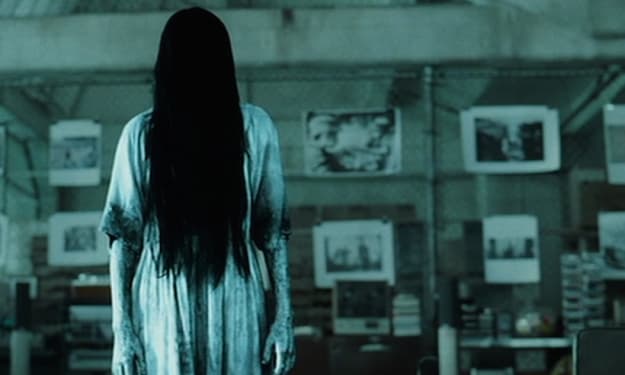A Filmmaker's Guide to the Horror Techniques Used in 'Perfume: The Story of a Murderer'
Study, Experience, and Analysis

(Note: this article contains information and analysis on the film "Perfume: The Story of a Murderer" and in order to gain the full insight it is recommended that you watch the entire film at least once over).
One of the most overlooked horror films of the 21st century but also one of the most artistic and beautifully made horror films of the 21st century is Perfume: The Story of a Murderer. Based on the book by Patrick Suskind, it creates a horrific concept and then plays it out using a sympathetic character. The audience feeling sympathy for this character makes itself known by his dire living conditions and past. It is a brilliant technique to make the concept as horrifying as physically possible.
Now, we're going to cover three themes that make the film more intense to experience and, of course, more horrifying to think about:
- Sympathy
- Violence
- Death
Let's have a look at the themes in context of the film and the frames within it for more information:
1. Sympathy

A Still from "Perfume"
This theme appears mostly in the first half of the film in order to establish the audience's emotions towards the main character. It happens by telling the backstory to the main character as being poor, dire, surrounded by death and suffering.
This would obviously make the audience feel sorry for him. When this scene happens in which he showcases his talent, this makes the audience feel happy for him and makes him almost look like the hero of the story. But, in fact, this is the first step towards him becoming the antagonist.
The sympathy the audience feels towards the character in this frame comes from the way the character is dressed compared to the other character in the scene. The character at the front seems to be dressed in fairly good clothing whilst the main character is dressed as a poorer person. This obviously makes a difference on to how the audience feel about him at this time.
The orange glow lights up the scene and most importantly, the main character is kept in a strange almost-shadow-like atmosphere. This emphasises that the transformation hasn't yet happened and he is still this poor character with some extraordinary talent.
You will see this happen over and over again in the first half of the film, before the killings begin. You will notice that everything that's been built up in terms of sympathy attempts to get dismantled, but seemingly the audience still feel sympathy for the main character. This works by having the character commit crimes and still be in dire poverty, he makes nothing out of what he does but he does it because he wants to find something out. It is a macabre investigation but it retains the feeling of sympathy for as long as it can.
2. Violence

A Still from "Perfume"
The theme of violence is extremely prevalent in the movie as being the primary focus of the main character. He kills and gains access to what is required to make the perfumes. It is not the fact that he kills people that is important, it is the way in which he kills them—and this isn't exactly talking about the method he uses to do so. This is actually talking about the way he feels when he kills them. It's not as if he's a psychopath who enjoys it, it's not that he's a sociopath who thinks that they just can because they can.
He kills them with a purpose for them, but not with any emotion of higher ground or any remorse for what he's doing. He does it because he has to, not because he wants to. He never seems to express the want or the dislike for killing; he just does it because he has to make a perfume.
In this frame, if you look at his face, he doesn't look like a serial killer, he doesn't look like someone who cares about what they're doing. He looks like someone who has to do something and he wants to get there by doing whatever he needs to. This is emphasised by his blank expression and staring into the open scenery.
You will see this repeated in the film and it begins in the perfumery when he kills the cat the make the perfume. So, if you want, have a look at that scene as well in order to get a better insight into how the main character's mind works. To him, this is one big experiment.
3. Death

A Still from "Perfume"
In the film, it isn't the victims' deaths that are the most prevalent but instead, how and when the main character would die. Now, if you've done what it said at the top and watched the whole film through, then you'll know that this happens in the penultimate scene of the film.
The whole film is about the life and death of the main character and so, when the death scene comes, you'll notice the pace slows right down and the whole thing goes into a very atmospheric and grand tone. The orange-ish glow and the suggestion of cannibalism are incredibly strong and so much so that we don't exactly know how he died but we assume he was eaten by his own creation. A very frankenstein-esque end to his life in which his creation destroys many lives until it completely wears him out that he dies before the whole thing actually finishes.
If you want to analyse this scene, I suggest that you look at how the main character acts towards this because this is the only scene in the whole film in which we know what he wants and what he's seeking - and the clue is that it has nothing to do with the perfumery secrets.
Whether this makes us feel sympathy towards the main character or not is up for speculation and, in terms of the mass audience it probably does as all of this sympathy has been build up only for him to commit pseudo-suicide. It's a beautiful but also a confusing scene and you'll need to watch quite closely in order to gain access to each individual item.
Conclusion:
The old-style scenery of Perfume always makes the horror concepts very strong because of the religious values of the characters within the film. But, when taking a look at the concept of horror, you need to concentrate on how the main character portrays that concept and what effect it has on the audience. Ultimately, out of everyone, the audience are going to be the only people who feel sympathy towards him—not the other characters.
Good luck on your next project!
About the Creator
Annie Kapur
200K+ Reads on Vocal.
English Lecturer
🎓Literature & Writing (B.A)
🎓Film & Writing (M.A)
🎓Secondary English Education (PgDipEd) (QTS)
📍Birmingham, UK






Comments
There are no comments for this story
Be the first to respond and start the conversation.